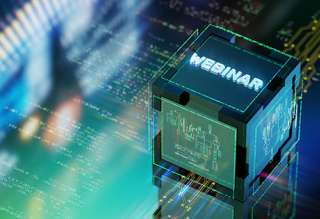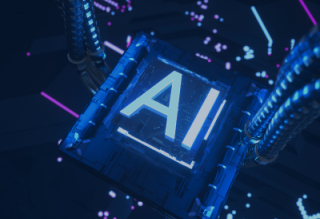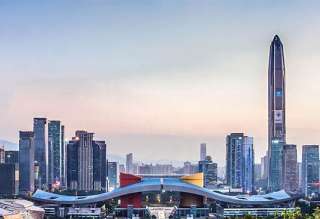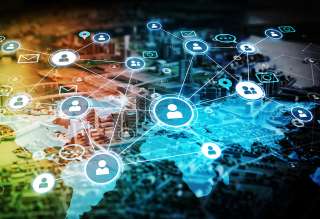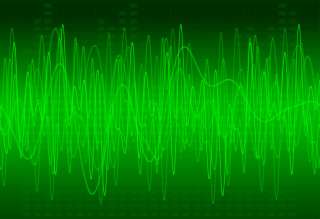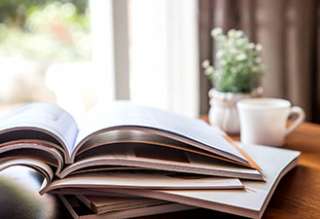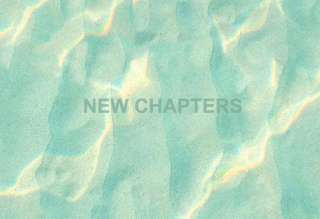- Our Story
- Publications & Resources
- Publications & Resources
- Publications
- IEEE Signal Processing Magazine
- IEEE Journal of Selected Topics in Signal Processing
- IEEE Signal Processing Letters
- IEEE Transactions on Computational Imaging
- IEEE Transactions on Image Processing
- IEEE Transactions on Information Forensics and Security
- IEEE Transactions on Multimedia
- IEEE Transactions on Signal and Information Processing over Networks
- IEEE Transactions on Signal Processing
- IEEE TCI
- IEEE TSIPN
- Data & Challenges
- Submit Manuscript
- Guidelines
- Information for Authors
- Special Issue Deadlines
- Overview Articles
- Top Accessed Articles
- SPS Newsletter
- SigPort
- SPS Resource Center
- Publications FAQ
- Blog
- News
- Dataset Papers
- Conferences & Events
- Community & Involvement
- Professional Development
- For Volunteers
- Information for Authors-OJSP
-
Home
Conferences Events IEEE Signal Processing Magazine IEEE SPL Article IEEE TIFS Article IEEE TMM Article IEEE TSP Article Jobs in Signal Processing Lectures Machine Learning Seasonal Schools Signal Processing News SPM Article SPS Distinguished Lectures SPS Newsletter Article SPS Webinar SPS Webinars SPS Webinar Series Webinar webinars
-
Our Story
What is Signal Processing?
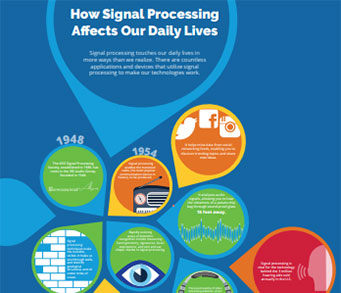
The technology we use, and even rely on, in our everyday lives –computers, radios, video, cell phones – is enabled by signal processing. Learn More » -
Publications & Resources
-
SPS Resources
- Signal Processing Magazine The premier publication of the society.
- SPS Newsletter Monthly updates in Signal Processing
- SPS Resource Center Online library of tutorials, lectures, and presentations.
- SigPort Online repository for reports, papers, and more.
- SPS Feed The latest news, events, and more from the world of Signal Processing.
-
SPS Resources
-
Conferences & Events
-
Community & Involvement
-
Membership
- Join SPS The IEEE Signal Processing Magazine, Conference, Discounts, Awards, Collaborations, and more!
- Chapter Locator Find your local chapter and connect with fellow industry professionals, academics and students
- Women in Signal Processing Networking and engagement opportunities for women across signal processing disciplines
- Students Scholarships, conference discounts, travel grants, SP Cup, VIP Cup, 5-MICC
- Young Professionals Career development opportunities, networking
- Get Involved
-
Technical Committees
- Applied Signal Processing Systems
- Audio and Acoustic Signal Processing
- Bio Imaging and Signal Processing
- Computational Imaging
- Image Video and Multidimensional Signal Processing
- Information Forensics and Security
- Machine Learning for Signal Processing
- Multimedia Signal Processing
- Sensor Array and Multichannel
- Signal Processing for Communication and Networking
- Signal Processing Theory and Methods
- Speech and Language Processing
- Technical Working Groups
- More TC Resources
-
Membership
-
Professional Development
-
Professional Development
- Signal Processing Mentorship Academy (SigMA) Program
- Micro Mentoring Experience Program (MiME)
- Distinguished Lecturer Program
- Distinguished Lecturers
- Distinguished Lecturer Nominations
- Past Lecturers
- Distinguished Industry Speaker Program
- Distinguished Industry Speakers
- Distinguished Industry Speaker Nominations
- Industry Resources
- IEEE Training Materials
- Jobs in Signal Processing: IEEE Job Site
-
Career Resources
- SPS Education Program Educational content in signal processing and related fields.
- Distinguished Lecturer Program Chapters have access to educators and authors in the fields of Signal Processing
- Job Opportunities Signal Processing and Technical Committee specific job opportunities
- Job Submission Form Employers may submit opportunities in the area of Signal Processing.
-
Professional Development
-
For Volunteers
-
For Board & Committee Members
- Board Agenda/Minutes* Agendas, minutes and supporting documentation for Board and Committee Members
- SPS Directory* Directory of volunteers, society and division directory for Board and Committee Members.
- Membership Development Reports* Insight into the Society’s month-over-month and year-over-year growths and declines for Board and Committee Members
-
For Board & Committee Members
Popular Pages
Today's:
- Information for Authors
- Submit Your Papers for ICASSP 2026!
- (ASRU 2025) 2025 IEEE Automatic Speech Recognition and Understanding Workshop
- Information for Authors OJSP
- IEEE Transactions on Information Forensics and Security
- Submit a Manuscript
- (ICME 2026) 2026 IEEE International Conference on Multimedia and Expo
- Information for Authors-SPL
- (CAI 2026) IEEE Conference on Artificial Intelligence 2026
- (ICASSP 2026) 2026 IEEE International Conference on Acoustics, Speech, and Signal Processing
- Membership
- Unified EDICS
- IEEE Transactions on Computational Imaging
- IEEE Open Journal of Signal Processing
- Conference Call for Papers
All time:
- Information for Authors
- Submit a Manuscript
- IEEE Transactions on Image Processing
- IEEE Transactions on Information Forensics and Security
- IEEE Transactions on Multimedia
- IEEE Transactions on Audio, Speech and Language Processing
- IEEE Signal Processing Letters
- IEEE Transactions on Signal Processing
- Conferences & Events
- IEEE Journal of Selected Topics in Signal Processing
- Information for Authors-SPL
- Conference Call for Papers
- Signal Processing 101
- IEEE Signal Processing Magazine
- Guidelines
Last viewed:
- Call for proposals: 2027 IEEE Conference on Artificial Intelligence (CAI)
- Guidelines for Reviewers
- Login Error
- 39 SPS Members Elevated to Fellow
- IEEE SPS Day - June 2023
- (MMSP 2026) 2026 IEEE International Workshop on Multimedia Signal Processing
- Award Recipients
- (ASRU 2025) 2025 IEEE Automatic Speech Recognition and Understanding Workshop
- Publications & Resources
- Volunteer Positions
- Conferences/Workshops
- IEEE JSTSP Special Issue on High-Dimensional Imaging: Emerging Challenges and Advances in Reconstruction and Restoration
- (ISBI 2026) 2026 IEEE 23rd International Symposium on Biomedical Imaging
- How can we make cameras smarter to better analyze humans?
- Editorial Board
Top Reasons to Join SPS Today!
1. IEEE Signal Processing Magazine
2. Signal Processing Digital Library*
3. Inside Signal Processing Newsletter
4. SPS Resource Center
5. Career advancement & recognition
6. Discounts on conferences and publications
7. Professional networking
8. Communities for students, young professionals, and women
9. Volunteer opportunities
10. Coming soon! PDH/CEU credits
Click here to learn more.
The Latest News, Articles, and Events in Signal Processing
Lecture Date: June 9, 2021 -- Virtual Lecture
Chapter: Turkey
Chapter Chair: Murat Saraclar
Topic: Graph Signal Processing for Computational Neuroimaging

The Signal Processing Group (https://uol.de/en/mediphysics-acoustics/sigproc) of the Department of Medical Physics and Acoustics at the University of Oldenburg, Germany, is seeking to fill the position of a Marie Skłodowska-Curie Early Stage Researcher (m/f/d) in acoustical signal processing.
July 11-15, 2022
Location: Taipei, Taiwan
March 28-31, 2022
Location: Kolkata, India
October 17-20, 2021
Location: New Paltz, NY, USA
December 13-17, 2021
Location: Cartagena, Colombia
IEEE Signal Processing Society Past President Ali H. Sayed, in his capacity as Chair of the Society’s Nominations and Appointments Committee, invites nominations for the IEEE Signal Processing Society Officer positions of President-Elect for the term 1 January 2022-31 December 2023 and Vice President-Technical Directions for the term 1 January 2022-31 December 2024.
Each month, the Chapter Briefs Newsletter will feature an OU Analytics Tip that will be helpful to all who utilize the OU Analytics tool. This month's Tip features obtaining Membership Verification.
Lecture Date: March 26, 2021 -- Virtual Lecture
Chapter: Gujarat
Chapter Chair: Chirag Paunwala
Topic: Human brain imaging: dynamics of functional brain networks, whole-brain
connectomics, cognitive and clinical biomarkers, computational
neuroimaging, functional magnetic resonance imaging
Each month, the Chapter Briefs Newsletter will feature an OU Analytics Tip that will be helpful to all who utilize the OU Analytics tool. This month's Tip features obtaining Membership Verification.
As a reminder for continuing chapter chairs and for incoming chapter chairs for 2021, we would like to highlight a valuable resource available to you. Launched in 2018, IEEE OU Analytics, is a web-based business intelligence tool which delivers essential metrics on memberships or subscriptions to OUs, including Societies, Councils, Technical Communities, etc.
All members who did not renew for 2021 by 31 December have a two-month grace period in which to renew without losing access to their benefits. On 27 February that grade period ends, and any member who has not yet renewed will have their benefits and services deactivated.
A reminder that chapter events and officer reporting need to be updated in vTools <http://vtools.ieee.org> throughout the year. This will ensure that current data is on file and that your chapter activity is accurately recorded.
US$200 for each Chapter and Affinity Group meeting minimum requirements in accordance with the following sections of the MGA Operations Manual.
This page contains the 2021 Rebate Schedule (section 9.0.E of the MGA Operations Manual). Additional information can be found on the Required Reporting web page and in the MGA Operations Manual.
The IEEE Signal Processing Society has developed guidelines related to SPS Chapter social media and Chapter Activities.
The IEEE Signal Processing Society is happy to announce the addition of twenty-six new Chapters formed in 2020. We welcome the following SPS Chapters and wish them great success in their future activities and events.
June 14-17, 2021
NOTE: Location - Virtual Conference
2021 Multimedia Prize Paper Award Nomination Period is Open. Any paper published in T-MM in 2018, 2019, or 2020 is eligible. Judging shall be on the bases of originality, subject matter, timeliness, potential impact, and presentation quality.
The 2021 Multimedia Prize Paper Award Nomination Period is Open. Any paper published in T-MM in 2018, 2019, or 2020 is eligible. Judging shall be on the bases of originality, subject matter, timeliness, potential impact, and presentation quality.
Pages
SPS Social Media
- IEEE SPS Facebook Page https://www.facebook.com/ieeeSPS
- IEEE SPS X Page https://x.com/IEEEsps
- IEEE SPS Instagram Page https://www.instagram.com/ieeesps/?hl=en
- IEEE SPS LinkedIn Page https://www.linkedin.com/company/ieeesps/
- IEEE SPS YouTube Channel https://www.youtube.com/ieeeSPS
Home | Sitemap | Contact | Accessibility | Nondiscrimination Policy | IEEE Ethics Reporting | IEEE Privacy Policy | Terms | Feedback
© Copyright 2025 IEEE - All rights reserved. Use of this website signifies your agreement to the IEEE Terms and Conditions.
A public charity, IEEE is the world's largest technical professional organization dedicated to advancing technology for the benefit of humanity.

